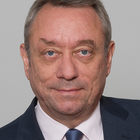The Current Column
Why we need a European development bank
Wolff, PeterThe Current Column (2017)
Bonn: German Development Institute / Deutsches Institut für Entwicklungspolitik (DIE), The Current Column of 27 November 2017
Bonn, 27 November 2017. The international financial architecture is in a state of flux. The major US financial institutions remain in the lead, but China is catching up and is set to play a key role on the global financial markets in the foreseeable future, not least due to its ongoing capital account surpluses, which are invested internationally. The role of Europe is diminishing relatively, due to Brexit and national resistance to a European capital market and a banking union. Long-term orientation is characteristic of China, including on the financial markets. Whilst western commercial financial institutions have a shorter-term time horizon and are heavily involved in speculative investments in secondary markets, the largely state-owned Chinese banks are far more committed to the financing of long-term investments. This is an indication of a planned economy focus, both in the financing of state-run companies in China and international infrastructure investments (Belt and Road). However, it does contribute to capital formation, particularly in the field of infrastructure, thereby boosting economic development in China and internationally. For these long-term purposes we are relying on bilateral and multilateral development banks.. Europe has four heavyweights in this field: the European Investment Bank (EIB), the European Bank for Reconstruction and Development (EBRD), the Kreditanstalt für Wiederaufbau (KfW) in Germany and the French Agençe Francaise de Développement (AFD). In addition, Europe also has more than a dozen smaller development finance institutions. These banks have a varied range of mandates: the EBRD was established to promote the development of the private sector economy in eastern Europe and the successor states to the former Soviet Union, the KfW supports companies in Germany and infrastructure in developing countries and the EIB finances investments in the EU (Juncker Plan), in neighbouring countries and also worldwide (External Investment Plan). As early as 2010 a commission led by the former IMF head Michel Camdessus recommended forming a European Bank for Cooperation and Development from the European development banks. This has yet to happen. Instead, the big four have expanded their international business further and extended their mandates. All are involved in Africa, promote climate policy, orientate themselves towards global sustainability goals and have an eye to European interests. At EU level they co-operate in the scope of platforms supported from the EU budget, as they are intended to serve European goals beyond the EU (EU Platform For Blending In External Cooperation). Now the EIB is pressing ahead with the proposal of founding a new European development bank as a subsidiary of the EIB, with a focus on Africa and the Balkans. The other European development banks are invited to acquire a stake in the new bank. This ’small’ solution undoubtedly offers the benefit of being easier to realise than the reorganisation of European development financing into one large institution, as recommended by the Camdessus commission. However, this pragmatic approach does not go far enough in view of the global developments noted above, and for the following reasons: There are economies of scale for development banks.
Only banks with an adequate level of personnel and capital resources are capable of spreading risk by financing risky and less risky investments in equal part. Their task is to develop challenging projects and finance these in the long term. They are intended to develop platforms with a broad portfolio of investment projects which the private sector and, in particular, large institutional investors can invest in. The majority of development banks are unable to offer this, due to a lack of the necessary assets. The new Asian Infrastructure Investment Bank (AIIB) founded by China also limits itself, at least for the time being, primarily to the co-financing of projects developed by others. Differentiating between investment in developing and industrialised countries is redundant.
With the global sustainability goals, international climate policy and the need to invest massively in sustainable infrastructure on a global scale, distinguishing between banks that fund investment in either developing or industrialised countries has outlived its purpose. Standards for sustainability, such as investments in the energy sector, are converging worldwide. The confluence of industrialised and developing countries is increasing, as is the investment of emerging countries such as China and India in industrialised countries. The necessity of diversification of risks in the bank balance sheets in particular illustrates that developing country risks should not be concentrated in one bank, as is foreseen in the EIB initiative. If Europe wishes to play a role in the future financial architecture, it needs an institution that can play in the same league as the World Bank and the up-and-coming Asian players. This is an opportunity that needs to be seized.


